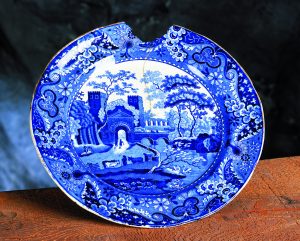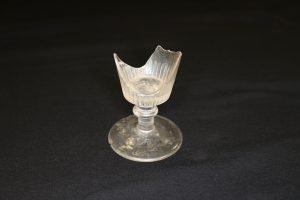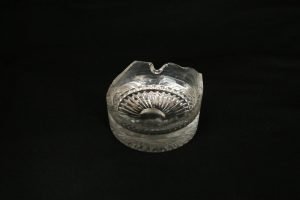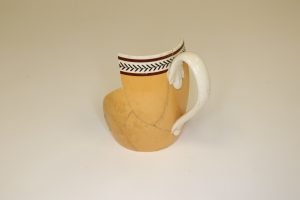
The Mackinac Island Native American Museum at the Biddle House will be one of the exciting new offerings from Mackinac State Historic Parks for the 2021 season. As visitors explore the new galleries a few of the artifacts they will see come from an archaeological excavation that took place on the property nearly fifty years ago.
In the summer of 1972, Dr. Lyle Stone, then staff archaeologist, brought over a small team from the Michilimackinac project to excavate the site of an old privy. It was discovered while restoring the privy you see on site today, which was built in the mid-nineteenth century. This older privy, five feet west of the existing one, appears to have been in use from the early 1820s into the 1840s, immediately preceding the existing one. The privy was constructed of horizontal log cribbing.

The Biddle House was constructed around 1780 during the move of the community of Michilimackinac from the mainland to the island. Edward and Agatha Biddle purchased it in mid-1820s and moved in around 1830, so the excavated privy dates to the early years of their residence.
Fragments of two birchbark containers were found, reflective of Agatha’s continued ties to her Anishnaabek heritage. A wide variety of industrially manufactured artifacts made between 1810 and 1840 were recovered as well. Some of these may have been purchased from the American Fur Company store at the end of Market Street.

At least fifty-seven mendable ceramic vessels were represented. Nineteenth-century ceramic materials, forms and designs changed quickly as the Industrial Revolution was in full swing. These changes were well documented and form the basis for dating the privy. Twenty-eight of the vessels were blue transfer-printed earthenware, including twelve plates, eight bowls/saucers, five cups and two pitchers and jugs. Other ceramic types represented are pearlware and annular-decorated creamware.
Fragments from a wide range of glass vessels were recovered. Recognizable bottle forms included dark green wine bottles, a clear rectangular case bottle, pharmaceutical phials and some indeterminate condiment or medicine bottles. Recognizable tableware forms included at least twenty-three clear tumblers, clear wine glasses, a light green glass pitcher and a small decanter or cruet. Utilitarian glass forms include fragments from two oil lamp bases and a fragment of windowpane.

Other commercially made artifacts included eleven white clay smoking pipe fragments, two milk glass buttons, a drawer handle, a scythe fragment, and an iron trap part. The most unusual finds were forty-two textile fragments, which consisted of fifteen types of fabric, mostly wools, perhaps from socks, coats, or sweaters.
Food remains included seeds and bones. Raspberry, cherry, grape, and squash/pumpkin seeds were identified. Pig, snowshoe hare and passenger pigeon bones were identified. Many fish bones were present but could not be identified as to species. Two coprolites (fossilized feces) were recovered, neither of which contained any parasites.
Taken together, the artifacts reflect a fairly high-status household, as we would expect from the Biddle family, successful merchants.









